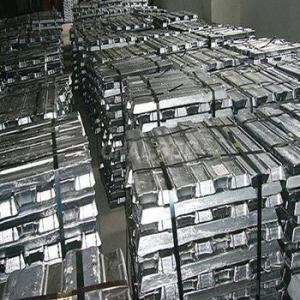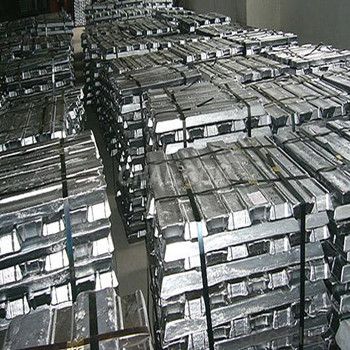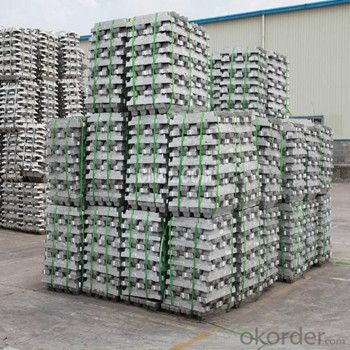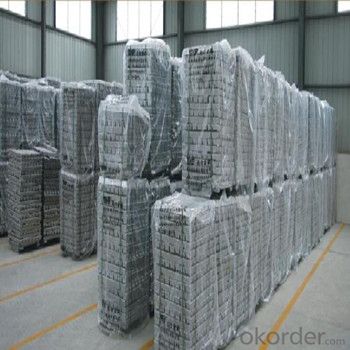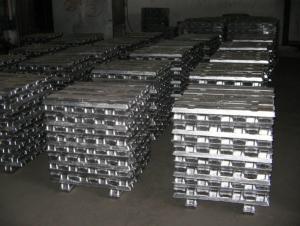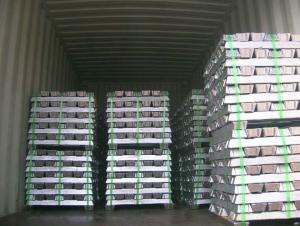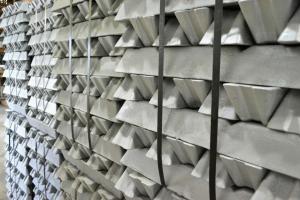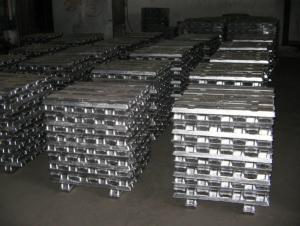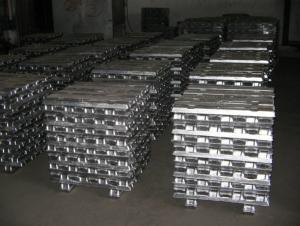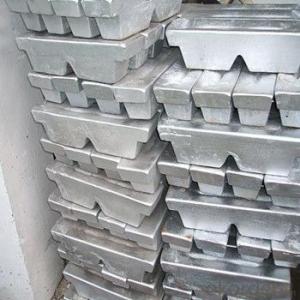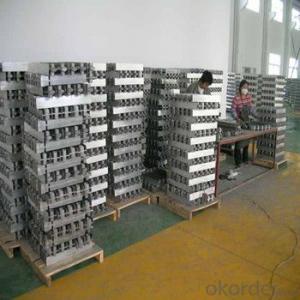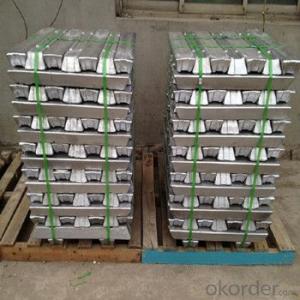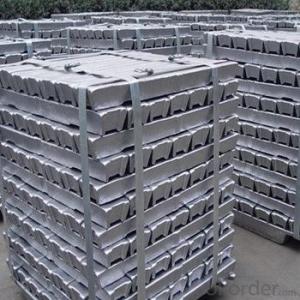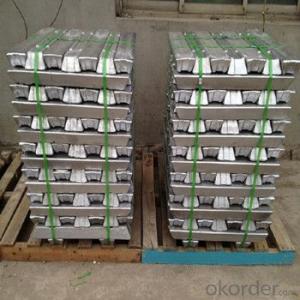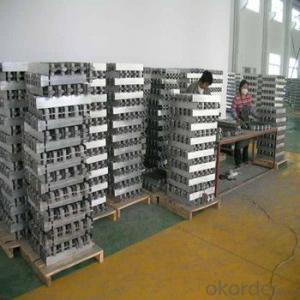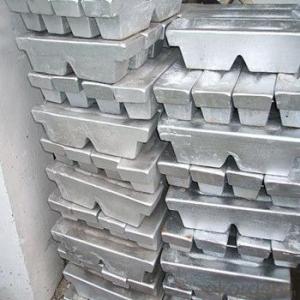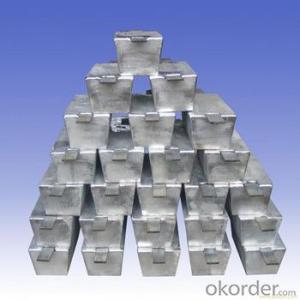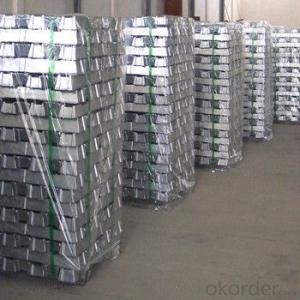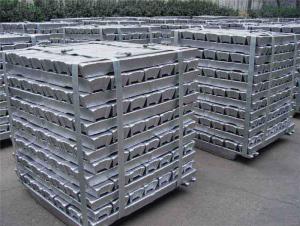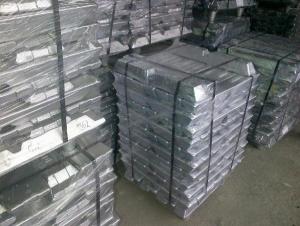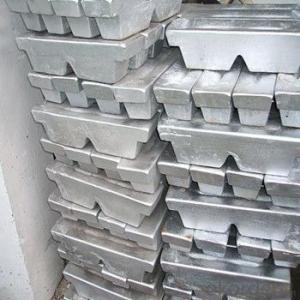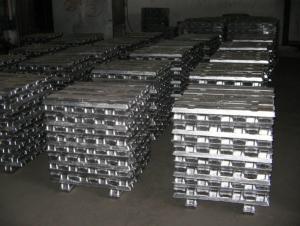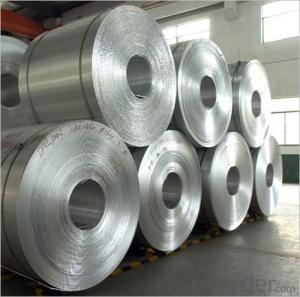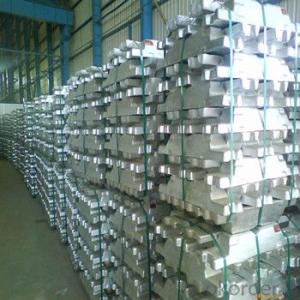Aluminum Pig/Ingot Popular Among Customers
- Loading Port:
- China main port
- Payment Terms:
- TT OR LC
- Min Order Qty:
- 1000 m.t.
- Supply Capability:
- 100000 m.t./month
OKorder Service Pledge
OKorder Financial Service
You Might Also Like
Pure Aluminum Pig/Ingot Used for Industry
1.Structure of Aluminum Pig/Ingot
A material that has been cast into a shape in order to be transported and processed easier than in an unprocessed form. An ingot is typically rectangular in shape, which allows it to be stacked. Ingots are most commonly associated with metals, with ingots of gold held in the vaults of banks and brokerages being popular images.
Aluminum Ingot is with the AL as the main chemical composition.Aluminum Ingot is used for industry,such as automobile,pinning and weaving,electron broadly and so on. Aluminum Ingot has the following advantages: easy control and operation, fast melting.
2.Main Features of the Aluminum Pig/Ingot
•High Purity
•Easy control and operation
•High strength
•Fast melting
•Competitive price
•Best Service
3.Aluminum Pig/Ingot Images
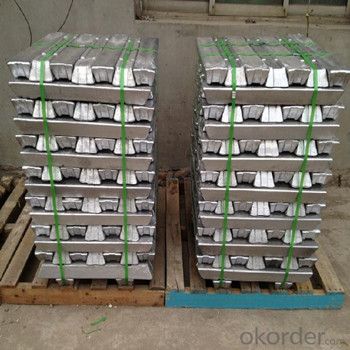
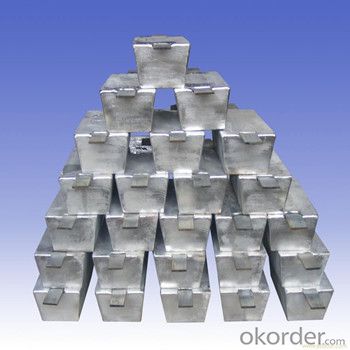
4.Aluminum Pig/Ingot Specification
Grade | Chemical Composition % | |||||||||
Al≥ | impurities ≤ | |||||||||
Si | Fe | Cu | Ga | Mg | Zn | Mn | others | Sum | ||
Al99.9 | 99.90 | 0.50 | 0.07 | 0.005 | 0.02 | 0.01 | 0.025 | - | 0.010 | 0.10 |
Al99.85 | 99.85 | 0.80 | 0.12 | 0.005 | 0.03 | 0.02 | 0.030 | - | 0.015 | 0.15 |
Al99.7 | 99.70 | 0.10 | 0.20 | 0.010 | 0.03 | 0.02 | 0.030 | - | 0.030 | 0.30 |
Al99.6 | 99.60 | 0.16 | 0.25 | 0.010 | 0.03 | 0.03 | 0.030 | - | 0.030 | 0.40 |
Al99.5 | 99.50 | 0.22 | 0.30 | 0.020 | 0.03 | 0.05 | 0.050 | - | 0.030 | 0.50 |
Al99.00 | 99.00 | 0.42 | 0.50 | 0.020 | 0.03 | 0.05 | 0.050 | - | 0.050 | 1.00 |
5.FAQ of Aluminum Pig/Ingot
We have organized several common questions for our clients,may help you sincerely:
①How about your company?
A reliable manufacturer & supplier of Aluminum Pig/Ingot,with many years’ experience in producing Aluminum Pig/Ingot.The items have beedn exported around the world,and have been acceptable among the customers,and have gotten the good reputation already.No matter from the quality,price and service,can be guaranteed for the cusgtomers.High purity and diffent grade are available.
②How to guarantee the quality of the products?
We have established the international advanced quality management system,every link from raw material to final product we have strict quality test;We resolutely put an end to unqualified products flowing into the market. At the same time, we will provide necessary follow-up service assurance.
③How long can we receive the product after purchase?
In the purchase of product within three wo We have organized several common questions for our clients,may help you sincerely:
- Q: What are the different forging techniques for aluminum ingots?
- Various forging techniques are utilized for aluminum ingots, each presenting distinct advantages and applications. Some commonly employed techniques encompass: 1. Open-die forging, also termed as smith forging or hand forging, involves shaping the aluminum ingot between flat dies. After heating, the ingot is hammered or pressed into the desired form. Open-die forging is optimal for generating simple shapes and is frequently utilized for crafting customized or unique components. 2. Closed-die forging, also known as impression forging or impression die forging, requires placing the aluminum ingot within a set of dies with a pre-designed cavity. The ingot is then subjected to high pressure, causing it to fill the cavity and adopt the die's shape. Closed-die forging permits the creation of intricate shapes and tighter tolerances, rendering it suitable for mass production of components. 3. Upset forging entails increasing the diameter or thickness of the aluminum ingot by compressing it between flat or shaped dies. The ingot is positioned horizontally between the dies, and vertical pressure is applied to shape it accordingly. Upset forging is particularly beneficial for manufacturing parts with augmented cross-sectional areas, such as shafts, bolts, or axles. 4. Press forging, also referred to as mechanical forging, employs a mechanical press to exert pressure on the aluminum ingot. The ingot is positioned between the dies, and pressure is gradually and precisely applied, enabling accurate shaping. Press forging is commonly employed to fabricate components with intricate shapes, high dimensional accuracy, and refined surface finishes. 5. Roll forging encompasses subjecting the aluminum ingot to pressure by passing it between a pair of rotating rolls. The rolls possess specially designed contours that shape the ingot as it traverses them. Roll forging is frequently utilized to manufacture elongated, cylindrical components like bars, shafts, or tubes. It yields exceptional dimensional control and surface finish. These forging techniques can be tailored or combined to meet specific requirements, and the selection of the most suitable technique relies on factors such as the complexity of the desired shape, production volume, cost considerations, and material properties.
- Q: What is the role of aluminum ingots in the production of foils?
- Aluminum ingots play a crucial role in the production of foils as they serve as the primary raw material. These ingots are melted and rolled into thin sheets to create aluminum foils. The ingots provide the necessary strength, flexibility, and durability required for the production of high-quality foils.
- Q: What are the different recycling methods for aluminum ingots?
- There are several different recycling methods for aluminum ingots, each with its own advantages and applications. One of the most common methods is called mechanical recycling, or shredding and melting. In this process, aluminum ingots are shredded into small pieces and then melted down in a furnace. The molten aluminum is then cast into new ingots or other forms for reuse. Mechanical recycling is highly efficient and can be used to recycle a wide range of aluminum products, including cans, automotive parts, and building materials. Another method is called smelting, which involves the use of a high-temperature furnace to separate aluminum from other materials. The aluminum is melted and then refined to remove impurities before being cast into ingots. Smelting is often used for recycling aluminum from industrial waste, such as scrap metal or manufacturing byproducts. Chemical recycling is another approach, which involves breaking down aluminum into its basic components using chemical reactions. This method is particularly useful for recycling aluminum from complex products, such as electronic waste or composite materials. The broken-down aluminum can then be used to produce new ingots or other aluminum products. Lastly, there is a method called electrolysis, which uses an electric current to separate aluminum from its oxide form. This process is energy-intensive but can be highly efficient in recycling aluminum from certain sources, such as aluminum dross or smelter slag. Electrolysis is commonly used in the aluminum industry to produce high-quality ingots with specific characteristics. Overall, these different recycling methods for aluminum ingots offer various benefits, including reducing the demand for virgin aluminum, saving energy, and reducing environmental impact. By choosing the appropriate recycling method based on the type of aluminum waste, we can ensure a more sustainable and circular economy for this valuable resource.
- Q: How can the recycling infrastructure for aluminum ingots be improved?
- One way to improve the recycling infrastructure for aluminum ingots is by implementing more efficient collection and sorting systems. This can involve setting up dedicated recycling centers that accept aluminum scrap from various sources, such as households, industries, and construction sites. Additionally, improving the technology used for sorting and separating different types of aluminum scrap can enhance the quality and purity of the ingots produced. Furthermore, increasing awareness and education about the importance of recycling aluminum can encourage more individuals and businesses to participate, leading to a larger supply of scrap for recycling.
- Q: How are aluminum ingots used in the production of doors and windows?
- Due to their inherent properties and versatility, aluminum ingots play a crucial role in the production of doors and windows. The first step involves melting down these ingots to create molten aluminum, which is then used to manufacture various door and window components. One primary application of aluminum ingots lies in the extrusion process. This process entails forcing the molten aluminum through a specially designed die to create continuous profiles of different shapes and sizes. These profiles serve as the foundation for door and window frames, sashes, mullions, and other structural elements. The extrusion process allows for tremendous design flexibility, enabling manufacturers to produce intricate and lightweight profiles that meet specific requirements. Furthermore, aluminum ingots are also employed in fabricating hardware components, including handles, locks, hinges, and fasteners. These parts are essential for the proper functioning and security of doors and windows. Aluminum's lightweight yet durable nature makes it the preferred choice for such hardware, as it offers strength without adding unnecessary weight to the final product. Additionally, aluminum ingots find use in the production of door and window panels. These panels can be crafted from aluminum sheets, which are formed, cut, and assembled to achieve the desired design. Aluminum panels deliver excellent thermal and sound insulation properties, making them energy-efficient and capable of reducing external noise. The utilization of aluminum ingots in the production of doors and windows offers several advantages. Firstly, aluminum exhibits high resistance to corrosion, ensuring that the finished products maintain their appearance and functionality over time. Secondly, aluminum is a lightweight material, making the doors and windows easier to handle and install. Lastly, aluminum is a sustainable and recyclable material, aligning with the growing demand for environmentally friendly products. In conclusion, the extensive use of aluminum ingots in the production of doors and windows stems from its unique properties. From forming extruded profiles to manufacturing hardware components and panels, aluminum serves as an ideal material for creating durable, lightweight, and aesthetically pleasing products.
- Q: What is the melting point of aluminum ingots?
- Aluminum ingots typically reach a melting point of around 660 degrees Celsius, equivalent to 1220 degrees Fahrenheit.
- Q: Can aluminum ingots be used in 3D printing?
- Indeed, aluminum ingots have the ability to be utilized in the realm of 3D printing. The reason behind this lies in the fact that aluminum possesses attributes such as being lightweight, possessing high strength, and exhibiting exceptional thermal conductivity. Nevertheless, instead of employing aluminum ingots directly, a technique known as powder bed fusion comes into play. More specifically, one can utilize selective laser melting (SLM) or electron beam melting (EBM) within this process. The modus operandi is as follows: fine aluminum powder is evenly distributed in thin layers, subsequently being selectively melted through the application of a laser or electron beam, layer by layer, in order to achieve the desired 3D object. This method enables the production of intricate geometries and exact parts, all while maintaining an elevated level of strength and precision.
- Q: Casting aluminum ingot, environmental protection has those requirements?.
- The dust bag dust collector system control calcium carbide furnace, furnace, furnace ferrosilicon aluminum ore furnace bag type dust collector, is the mainstream of calcium carbide furnace, furnace, ferrosilicon furnace development at present, the calcium carbide furnace is high energy consuming production equipment, flue gas residual heat, high temperature flue gas. Therefore, no matter what type of bag filter system, cooling measures shall be taken
- Q: What is aluminium ingot? Is it different from other series of aluminum?
- The problem lies in the production process, the mold work with a problem, to the mold work belt repair, this you have to let manufacturers solve.
- Q: 15% of the iron in the ingot represents 1 tons of iron
- In particular, two pollution shall be avoided when dealing with wastes, and harmful and harmful wastes shall be guaranteed not to cause harm to humans. It is necessary to formulate a comprehensive and comprehensive treatment plan for solid waste produced by the city. Comprehensive treatment is aimed at all kinds of waste in the city to a certain place, according to the characteristics of solid waste, the waste treatment process are combined into a system, so as to make reasonable use of the various concentration of material and energy. Through comprehensive treatment can effectively reduce the final disposal of waste, waste emissions, reduce the area of environmental pollution, to prevent the spread of contamination two times, while still being a total processing of low cost, high resource utilization efficiency.
Send your message to us
Aluminum Pig/Ingot Popular Among Customers
- Loading Port:
- China main port
- Payment Terms:
- TT OR LC
- Min Order Qty:
- 1000 m.t.
- Supply Capability:
- 100000 m.t./month
OKorder Service Pledge
OKorder Financial Service
Similar products
Hot products
Hot Searches
Related keywords
